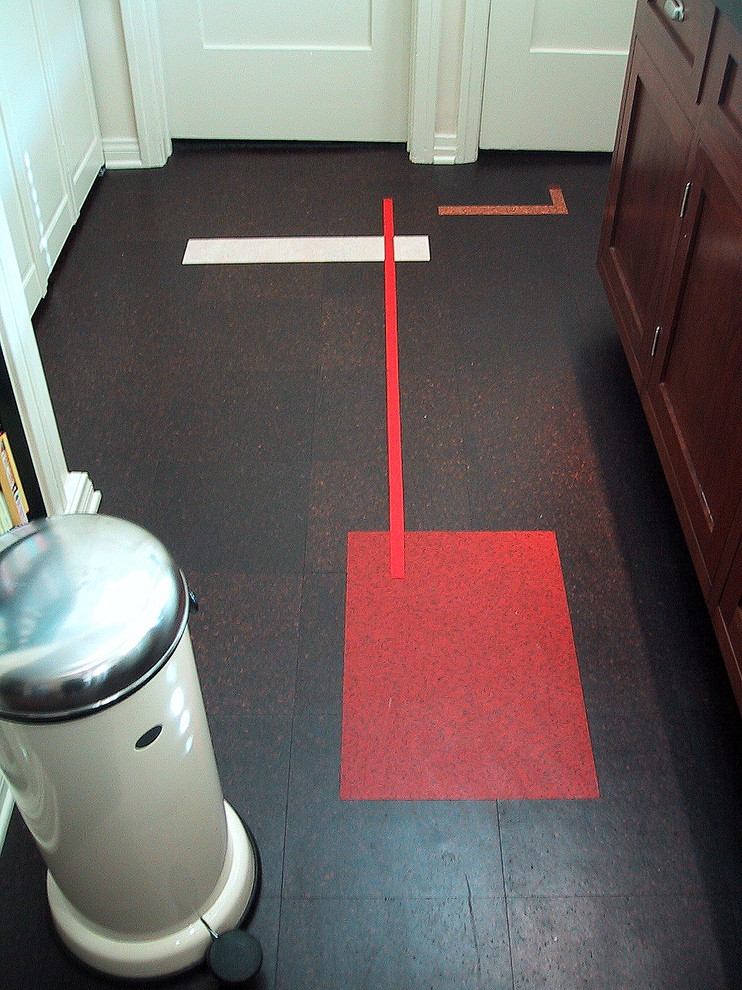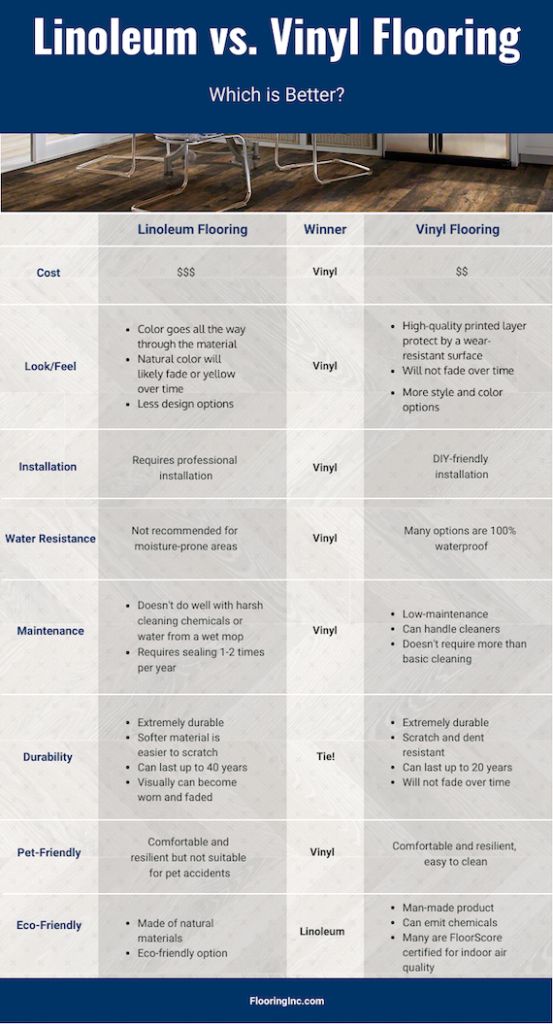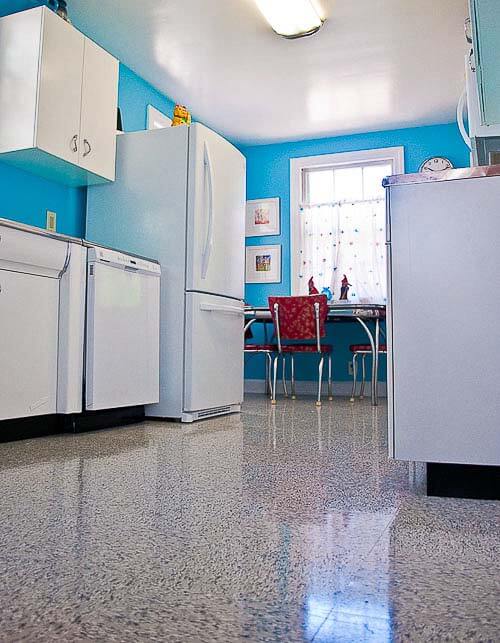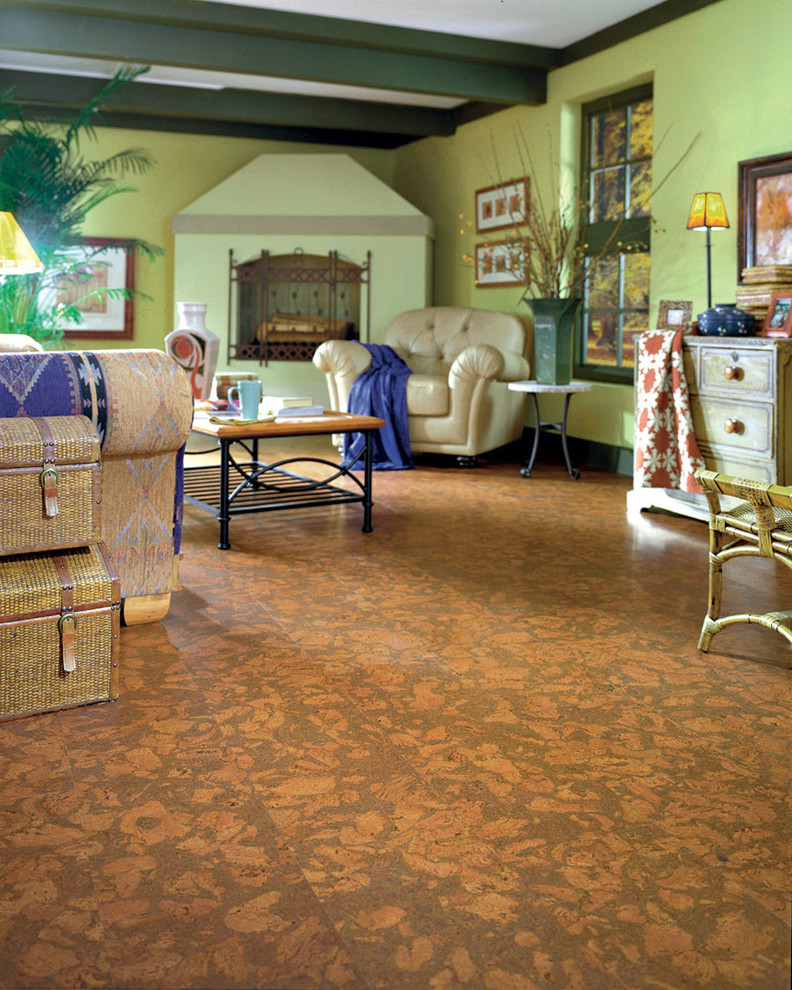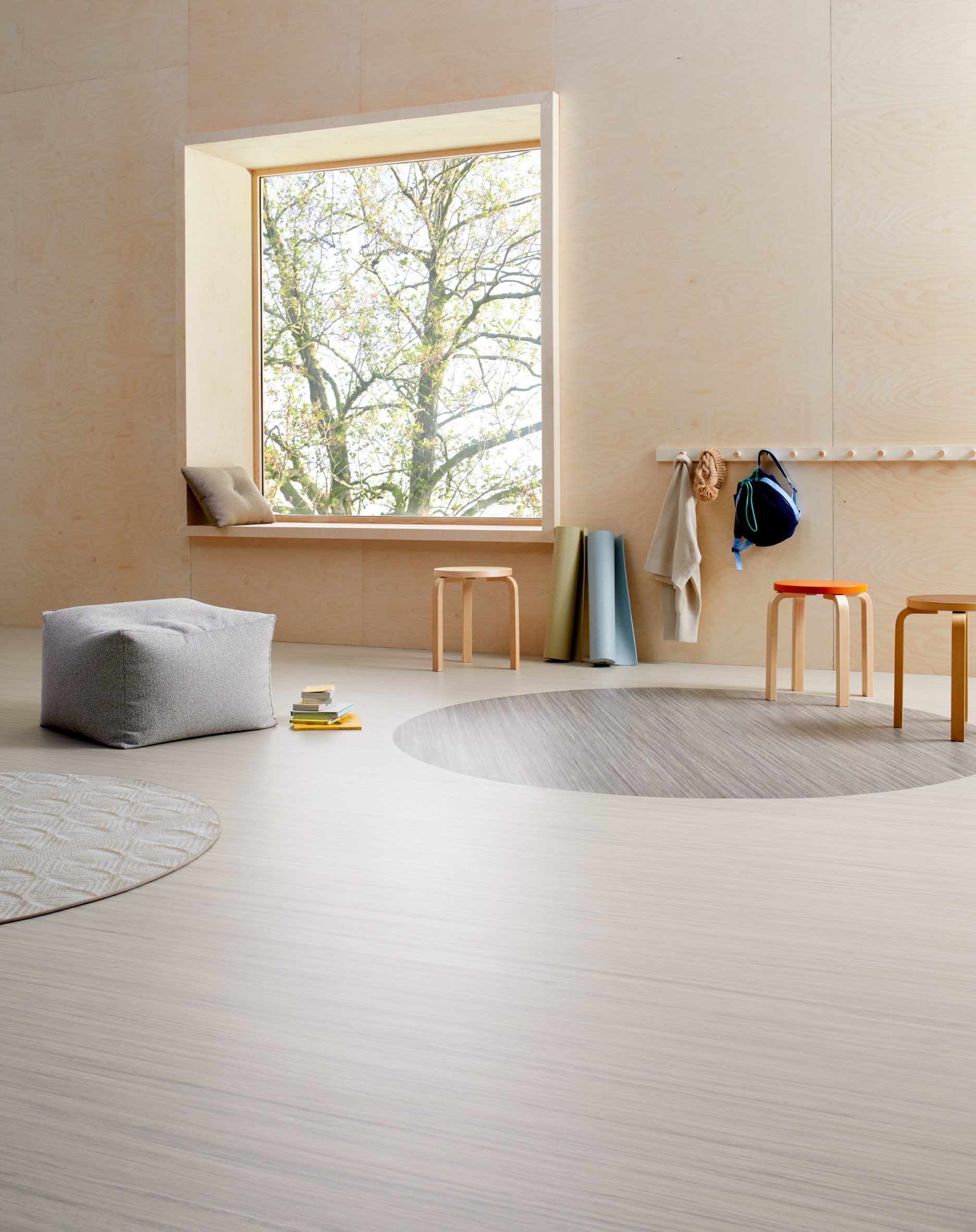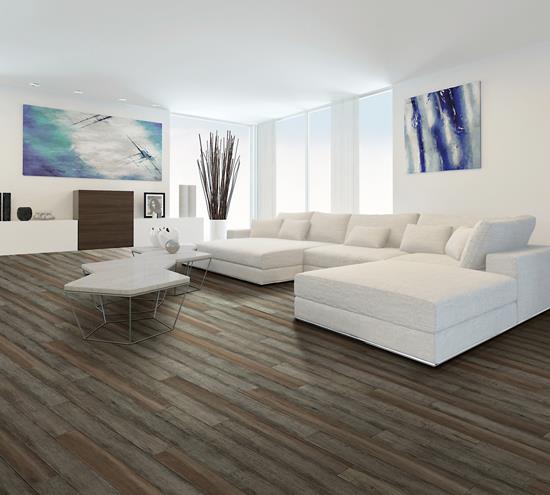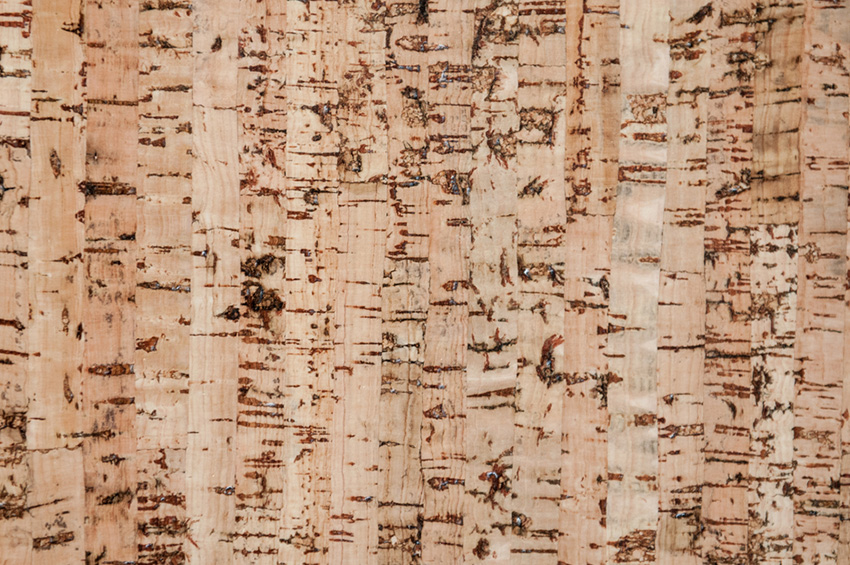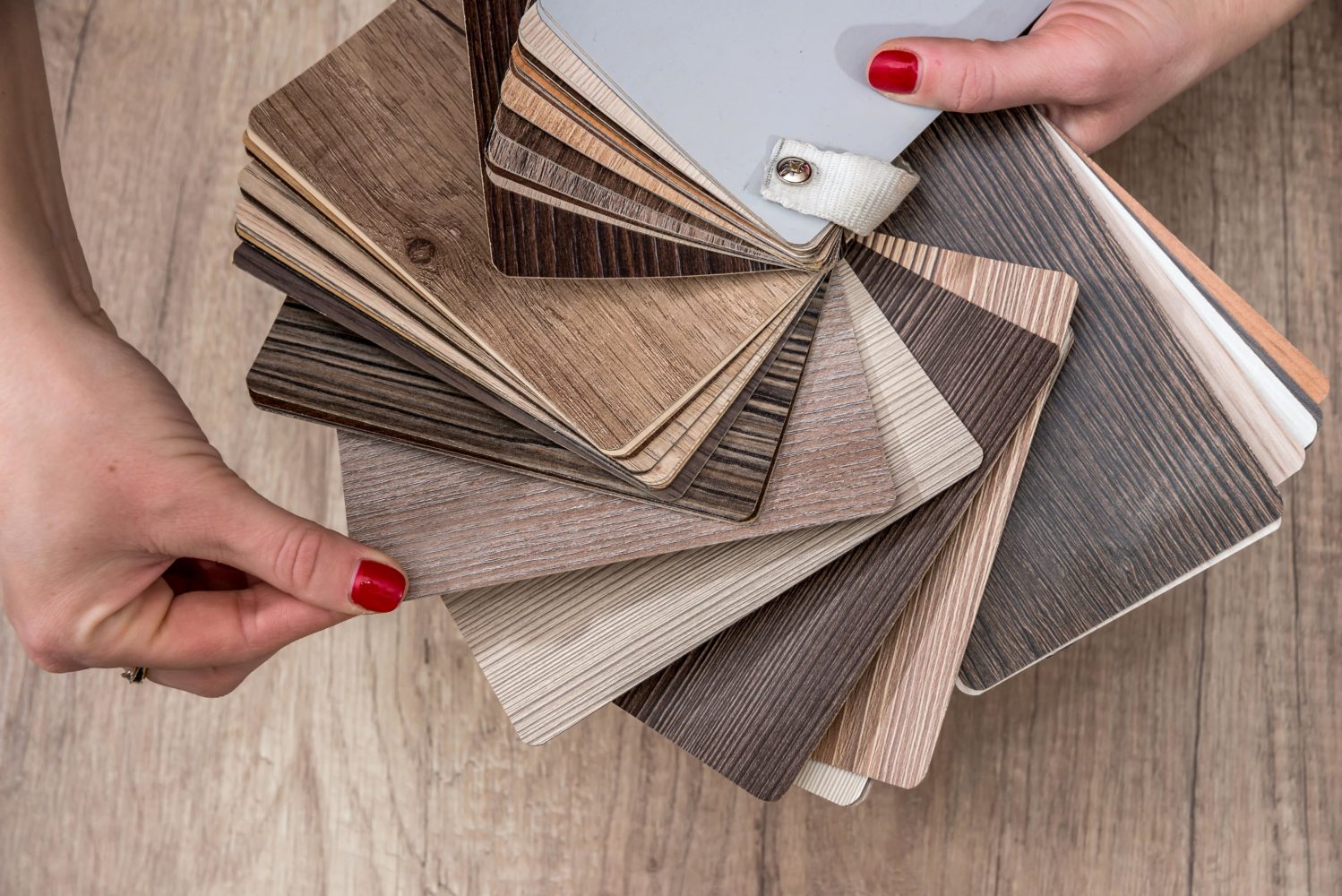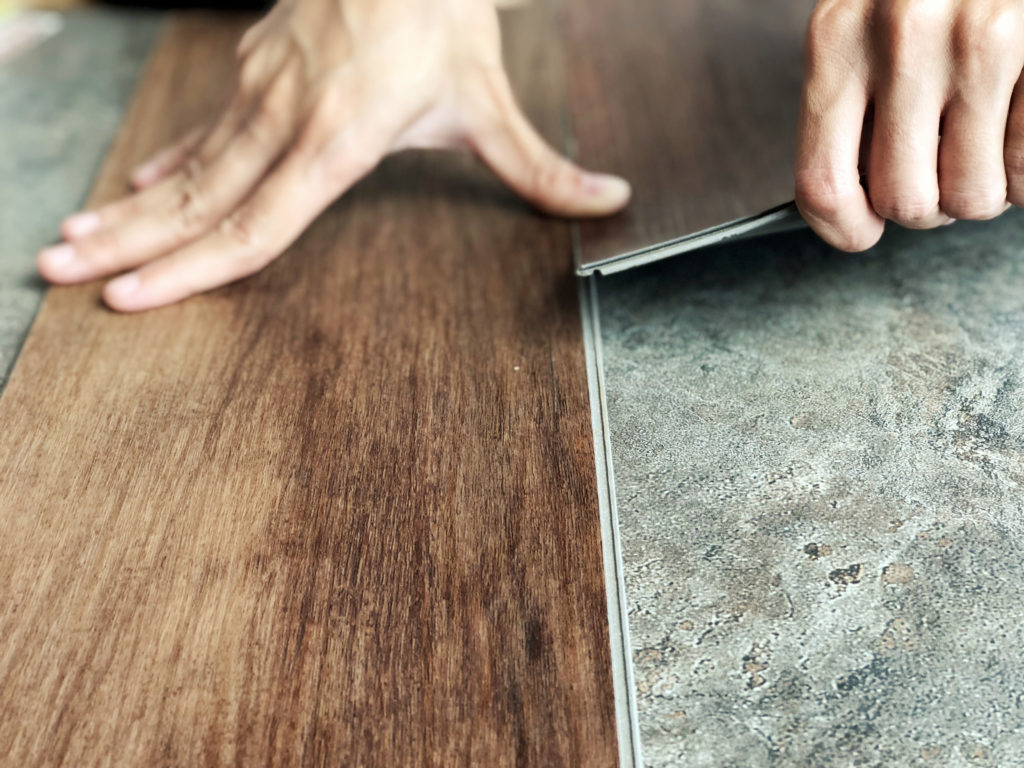Introduction to Cork and Linoleum Flooring
Cork and linoleum are two popular choices for flooring, each offering unique characteristics and benefits. Both materials have gained popularity in recent years due to their eco-friendly properties, durability, and versatility in design. Let’s discuss the similarities and differences between cork and linoleum flooring to help you make an informed decision for your home or project.
- Material Composition: Cork flooring is made from the bark of cork oak trees, which is harvested without harming the tree. The bark regenerates over time, making cork a renewable and sustainable material. Linoleum, on the other hand, is composed of natural materials such as linseed oil, pine resin, wood flour, cork dust, and mineral pigments. Like cork, linoleum is considered environmentally friendly due to its natural composition and renewable resources.
- Durability and Resilience: Both cork and linoleum flooring are known for their durability and resilience. Cork flooring is naturally resistant to moisture, mold, mildew, and pests, making it suitable for use in kitchens, bathrooms, and other high-moisture areas. Linoleum is also highly durable and resistant to scratches, dents, and stains, making it an excellent choice for high-traffic areas such as entryways and living rooms. With proper care and maintenance, both cork and linoleum flooring can last for decades.
- Comfort and Insulation: One of the distinguishing features of cork flooring is its natural elasticity and cushioning properties, which provide excellent comfort underfoot. Cork flooring is soft and warm to the touch, making it ideal for areas where you’ll be standing for long periods, such as kitchens or laundry rooms. Linoleum flooring also offers some degree of comfort and insulation, but it tends to be firmer and less forgiving than cork.
- Installation Options: Cork flooring is available in both tiles and planks, which can be installed using a glue-down or floating method. Glue-down cork tiles provide a more permanent and stable installation while floating cork planks are easier to install and can be laid directly over existing flooring. Linoleum flooring comes in sheets, tiles, or planks, and can be installed using a glue-down or floating method as well. The installation method will depend on the type of linoleum and the specific requirements of your project.
- Cost Considerations: In terms of cost, both cork and linoleum flooring are generally more affordable than hardwood or stone flooring options. However, the cost can vary depending on factors such as the quality of the material, the installation method, and any additional features such as underlayment or sealant. Cork flooring tends to be slightly more expensive than linoleum, but the difference in cost is often offset by the durability and longevity of the material.
- Design Versatility: When it comes to design options, both cork and linoleum flooring offer a wide range of colors, patterns, and textures to suit any aesthetic preference. Cork flooring is available in natural shades ranging from light tan to dark brown, as well as stained or painted finishes for added versatility. Linoleum flooring comes in an even wider variety of colors and patterns, including traditional marble and wood-look designs, as well as contemporary geometric or abstract patterns.
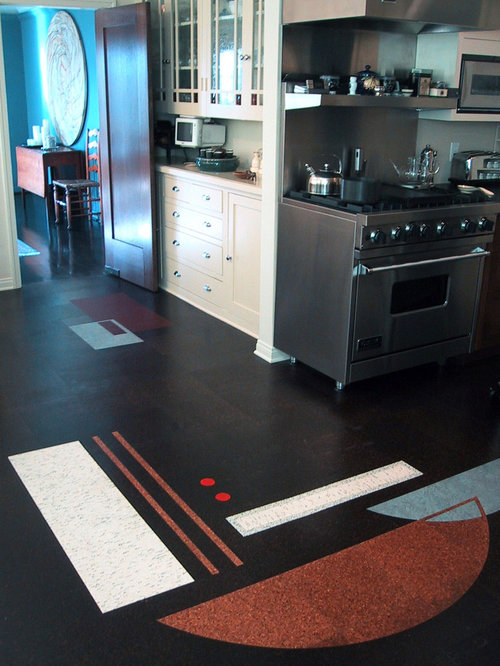
Durability and Longevity: Cork vs. Linoleum
When it comes to choosing flooring for your home or project, durability and longevity are essential factors to consider. Both cork and linoleum flooring are known for their resilience and durability, but they each have unique characteristics that may influence their lifespan and performance in different environments. Let’s compare the durability and longevity of cork and linoleum flooring to help you make an informed decision for your space.
Cork Flooring Durability: Cork flooring is naturally resistant to moisture, mold, mildew, and pests, making it highly durable and long-lasting. The cellular structure of cork contains millions of tiny air pockets, which provide natural insulation and cushioning, as well as resilience against impact and pressure. Cork flooring is also resistant to scratches, dents, and stains, although it may show signs of wear and tear over time, especially in high-traffic areas. With proper care and maintenance, cork flooring can last for decades, making it an excellent investment for homeowners seeking a durable and eco-friendly flooring option.
Linoleum Flooring Durability: Like cork, linoleum flooring is highly durable and resistant to scratches, dents, and stains. Linoleum is composed of natural materials such as linseed oil, pine resin, wood flour, cork dust, and mineral pigments, which combine to create a tough and resilient surface that can withstand heavy foot traffic and everyday wear and tear. Linoleum flooring is also naturally antibacterial and antistatic, making it easy to clean and maintain. With proper care and maintenance, linoleum flooring can last for decades, making it a durable and cost-effective flooring option for residential and commercial applications.
Environmental Factors: In addition to their inherent durability, both cork and linoleum flooring offer environmental benefits that contribute to their longevity. Cork flooring is made from the bark of cork oak trees, which is harvested without harming the tree. The bark regenerates over time, making cork a renewable and sustainable material that can be harvested indefinitely. Linoleum flooring is composed of natural materials and does not emit harmful volatile organic compounds (VOCs) like some synthetic flooring options. Both cork and linoleum flooring are biodegradable at the end of their lifespan, making them environmentally friendly choices for homeowners seeking sustainable flooring solutions.
Maintenance Requirements: While cork and linoleum flooring are both highly durable, they each have specific maintenance requirements that can influence their longevity. Cork flooring should be swept or vacuumed regularly to remove dirt, dust, and debris, and mopped with a damp mop and a mild cleaning solution as needed. Linoleum flooring should be swept or vacuumed regularly as well, and mopped with a damp mop and a neutral pH cleaning solution to remove dirt and stains. Both cork and linoleum flooring should be protected from excessive moisture and sharp objects to prevent damage and prolong their lifespan.
Warranty Coverage: When purchasing cork or linoleum flooring, it’s essential to consider the manufacturer’s warranty coverage to ensure that you’re protected against defects and premature wear and tear. Many cork and linoleum flooring manufacturers offer warranties that cover defects in materials and workmanship, as well as premature wear and tear under normal residential use. Be sure to read the warranty terms and conditions carefully and follow the manufacturer’s recommended installation and maintenance guidelines to ensure that your flooring is covered under warranty.
Installation Considerations: The installation method can also affect the durability and longevity of cork and linoleum flooring. Both materials can be installed using a glue-down or floating method, but the specific installation requirements may vary depending on the type of flooring and the subfloor conditions. Glue-down installations provide a more permanent and stable bond, while floating installations are easier to install and can be laid directly over existing flooring. Be sure to follow the manufacturer’s recommended installation guidelines and use high-quality adhesives and underlayments to ensure a durable and long-lasting flooring installation.
Environmental Impact: Evaluating Cork and Linoleum Flooring
When it comes to choosing flooring materials, considering their environmental impact is becoming increasingly important for many homeowners. Cork and linoleum flooring are both known for their eco-friendly characteristics, but it’s essential to understand the specific environmental factors associated with each material. Let’s evaluate the environmental impact of cork and linoleum flooring to help you make an informed decision for your home or project.
Renewability and Sustainability: Cork flooring is made from the bark of cork oak trees, which are harvested without harming the tree. The bark regenerates over time, making cork a renewable and sustainable material that can be harvested indefinitely. Cork oak trees also play a crucial role in carbon sequestration, helping to mitigate climate change by absorbing carbon dioxide from the atmosphere. Additionally, cork forests provide valuable habitat for a variety of plant and animal species, promoting biodiversity and supporting healthy ecosystems. Overall, cork flooring is considered an environmentally friendly choice for homeowners seeking sustainable flooring options.
Manufacturing Processes: The manufacturing process for cork flooring typically involves harvesting the bark of cork oak trees, grinding it into granules, and then compressing it into sheets or tiles using heat and pressure. The production of cork flooring requires minimal energy and resources compared to other flooring materials, making it an energy-efficient and low-impact option. Linoleum flooring is also considered environmentally friendly, as it is composed of natural materials such as linseed oil, pine resin, wood flour, cork dust, and mineral pigments. Linoleum production involves mixing these natural ingredients and then heating and pressing them into sheets or tiles. Like cork flooring, the manufacturing process for linoleum flooring is relatively low-impact and energy-efficient.
Recyclability and Biodegradability: Both cork and linoleum flooring are biodegradable at the end of their lifespan, making them environmentally friendly choices for homeowners seeking sustainable flooring options. Cork flooring can be recycled or composted at the end of its life, and cork granules can even be reused to make new flooring products. Linoleum flooring can also be recycled or composted, as it is composed of natural materials that break down over time. By choosing cork or linoleum flooring, homeowners can reduce their environmental footprint and contribute to a more sustainable future.
Indoor Air Quality: Cork and linoleum flooring are both known for their excellent indoor air quality, as they do not emit harmful volatile organic compounds (VOCs) like some synthetic flooring materials. VOCs can off-gas from flooring products over time, contributing to indoor air pollution and posing health risks to occupants. Cork and linoleum flooring are non-toxic and hypoallergenic, making them safe choices for homes with pets, children, or individuals with allergies or respiratory sensitivities. By choosing cork or linoleum flooring, homeowners can create healthier indoor environments for themselves and their families.
Energy Efficiency: The energy efficiency of cork and linoleum flooring can vary depending on factors such as production methods, transportation distances, and installation techniques. Cork flooring typically has a lower embodied energy compared to linoleum flooring, as it requires fewer resources and energy-intensive processes to manufacture. Additionally, cork flooring provides natural insulation properties, helping to reduce heating and cooling costs and improve energy efficiency in the home. Linoleum flooring also offers some degree of insulation and energy efficiency, although it may not be as effective as cork in this regard. By choosing cork or linoleum flooring, homeowners can reduce their energy consumption and environmental impact while enjoying comfortable and sustainable living spaces.
Maintenance and Care: Managing Cork and Linoleum Floors
Proper maintenance and care are essential for preserving the beauty and longevity of cork and linoleum flooring. While both materials are known for their durability and resilience, they each have specific maintenance requirements that homeowners should be aware of to ensure optimal performance over time. Below we provide tips and guidelines for managing cork and linoleum floors to keep them looking their best for years to come.
Regular Cleaning: Regular cleaning is key to maintaining the appearance and cleanliness of cork and linoleum flooring. Sweep or vacuum the floors regularly to remove dirt, dust, and debris that can scratch or dull the surface. Use a soft-bristled broom or a vacuum cleaner with a brush attachment to avoid scratching the floors, and be sure to clean up spills and accidents promptly to prevent staining or damage.
Gentle Mopping: Mop cork and linoleum floors with a damp mop and a mild cleaning solution to remove stubborn dirt and stains. Avoid using harsh chemicals or abrasive cleaners, as these can damage the finish and the surface of the flooring. Instead, use a pH-neutral cleaner or a mixture of warm water and mild dish soap to clean the floors effectively without causing harm.
Avoid Excess Moisture: While cork and linoleum flooring are both resistant to moisture, excessive exposure to water can cause damage over time. Avoid wet mopping or soaking the floors, as this can cause warping, buckling, or discoloration. Instead, use a damp mop or a microfiber mop with minimal water to clean the floors, and be sure to dry them thoroughly afterward to prevent moisture from penetrating the surface.
Protective Measures: To prevent scratches, dents, and other damage to cork and linoleum flooring, take protective measures to avoid heavy impact and wear. Place felt pads or furniture glides under heavy furniture legs to prevent them from scratching or denting the floors, and use rugs or mats in high-traffic areas such as entryways and hallways to protect against excessive wear and tear. Additionally, avoid dragging or sliding heavy objects across the floors, as this can scratch the surface and damage the finish.
Regular Inspections: Periodically inspect cork and linoleum flooring for signs of damage or wear, such as scratches, dents, or discoloration. Repair any damage promptly to prevent it from spreading and compromising the integrity of the floors. If you notice any loose seams or edges, reapply the adhesive as needed to ensure a secure bond to the subfloor. Additionally, check the condition of any protective coatings or sealants and reapply them as needed to maintain the durability and longevity of the flooring.
Preventive Maintenance: In addition to regular cleaning and inspections, there are several preventive maintenance measures you can take to prolong the life of cork and linoleum flooring. Avoid exposing the floors to direct sunlight for prolonged periods, as this can cause fading and discoloration. Use area rugs or mats in areas with heavy foot traffic or frequent spills to protect the floors from wear and tear. And be sure to follow the manufacturer’s recommended maintenance guidelines to ensure that your flooring stays looking its best for years to come.
Design and Aesthetic Appeal: Cork versus Linoleum Flooring Options
When it comes to flooring, not only is durability and maintenance crucial, but so is the aesthetic appeal. Both cork and linoleum offer a wide range of design options to suit various interior styles and preferences. Let’s talk about the design and aesthetic aspects of cork and linoleum flooring, comparing their options to help you choose the perfect flooring for your space.
Cork Flooring Design Options: Cork flooring offers a natural, warm aesthetic that adds character and charm to any room. It comes in various shades ranging from light tan to deep brown, allowing you to choose a color that complements your decor. In addition to its natural look, cork flooring can also be stained or painted to achieve a more customized appearance. You can find cork flooring in tile or plank formats, with different sizes and patterns available to create unique designs. Whether you prefer a traditional, rustic look or a modern, sleek aesthetic, cork flooring provides versatility to match your style.
Linoleum Flooring Design Options: Linoleum flooring offers an extensive array of design options, ranging from classic to contemporary. It comes in a wide range of colors, patterns, and textures, including traditional marble and wood-look designs, as well as bold geometric or abstract patterns. Linoleum flooring is available in sheets, tiles, or planks, allowing for various installation layouts and design possibilities. Whether you’re looking for a timeless, elegant style or a trendy, avant-garde look, linoleum flooring provides endless design flexibility to suit your taste.
Natural Look and Feel: Both cork and linoleum flooring offer a natural look and feel that adds warmth and character to any space. Cork flooring has a soft, cushioned texture underfoot, providing comfort and insulation, while linoleum flooring has a smooth, resilient surface that’s easy to clean and maintain. Both materials offer excellent sound absorption properties, reducing noise and echoing in the room. Whether you prefer the organic texture of cork or the sleek finish of linoleum, both options provide a natural aesthetic that enhances the overall ambiance of your home.
Customization and Personalization: Cork and linoleum flooring allow for customization and personalization to create a unique look that reflects your style and personality. Cork flooring can be stained or painted to match your desired color scheme, or mixed and matched to create custom patterns and designs. Linoleum flooring offers an even greater degree of customization, with endless color and pattern options to choose from. You can mix and match different colors and textures to create one-of-a-kind designs or use bold patterns to make a statement in the room.
Versatility in Application: Both cork and linoleum flooring are versatile materials that can be used in various applications throughout the home. Cork flooring is suitable for living rooms, bedrooms, kitchens, and even bathrooms, thanks to its natural moisture resistance. It’s also a popular choice for commercial spaces such as offices and retail stores due to its durability and comfort. Linoleum flooring is equally versatile, with applications ranging from residential kitchens and bathrooms to high-traffic commercial areas such as hospitals and schools. Whether you’re renovating a single room or tackling a larger project, cork and linoleum flooring offer versatile design options to suit any space.
Long-Term Aesthetics: Over time, both cork and linoleum flooring maintain their aesthetic appeal, thanks to their durable construction and low-maintenance nature. Cork flooring may develop a rich patina and deepen in color with age, adding to its natural beauty and character. Linoleum flooring retains its vibrant colors and patterns, with minimal fading or wear over time. Both materials are resistant to scratches, stains, and fading, ensuring that your floors stay looking beautiful for years to come. Whether you choose cork or linoleum flooring, you can enjoy timeless style and long-lasting beauty that enhances the value and comfort of your home.
Linoleum vs. Cork Floor
Bio-Based Flooring Alternatives: From linoleum to cork and bamboo
New Cork Flooring Has the Benefits of Luxury Vinyl Tile
Vinyl Vs Linoleum Flooring âu20acu201d Whatâu20ac™s The Difference?
Linoleum vs. Laminate vs. Vinyl: Differences, Pros, u0026 Cons
Sheet Vinyl Flooring Buying Guide u2013 FlooringInc Blog Linoleum
cork look vinyl flooring squares Vinyl Flooring Rubber Flooring
Pros u0026 Cons of Flooring Types (Tile, Concrete, Vinyl, Carpet
Related Posts:
